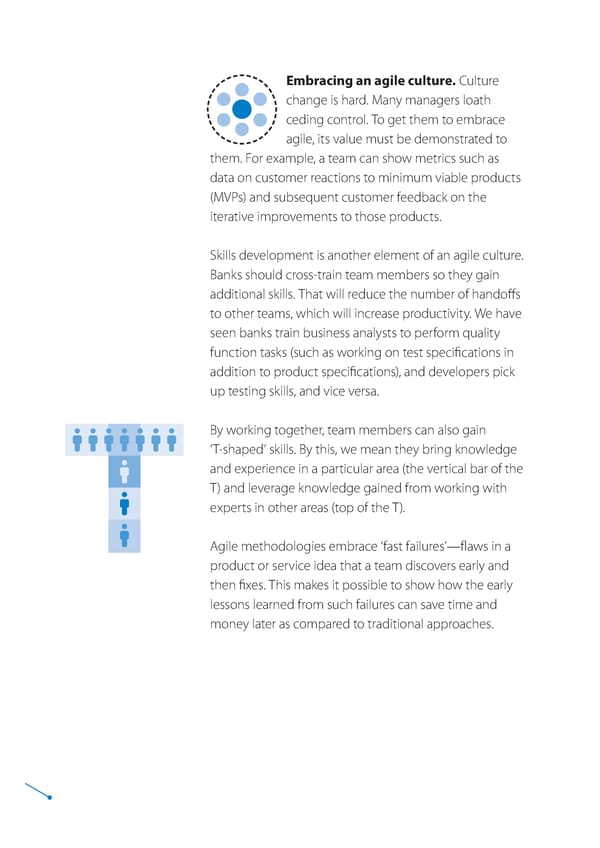Embracing an agile culture. Culture change is hard. Many managers loath ceding control. To get them to embrace agile, its value must be demonstrated to them. For example, a team can show metrics such as data on customer reactions to minimum viable products (MVPs) and subsequent customer feedback on the iterative improvements to those products. Skills development is another element of an agile culture. Banks should cross-train team members so they gain additional skills. That will reduce the number of handoffs to other teams, which will increase productivity. We have seen banks train business analysts to perform quality function tasks (such as working on test specifications in addition to product specifications), and developers pick up testing skills, and vice versa. By working together, team members can also gain ‘T-shaped’ skills. By this, we mean they bring knowledge and experience in a particular area (the vertical bar of the T) and leverage knowledge gained from working with experts in other areas (top of the T). Agile methodologies embrace ‘fast failures’—flaws in a product or service idea that a team discovers early and then fixes. This makes it possible to show how the early lessons learned from such failures can save time and money later as compared to traditional approaches.
 How Retail CEOs Can Drive Agile to Grow Their Business Page 24 Page 26
How Retail CEOs Can Drive Agile to Grow Their Business Page 24 Page 26